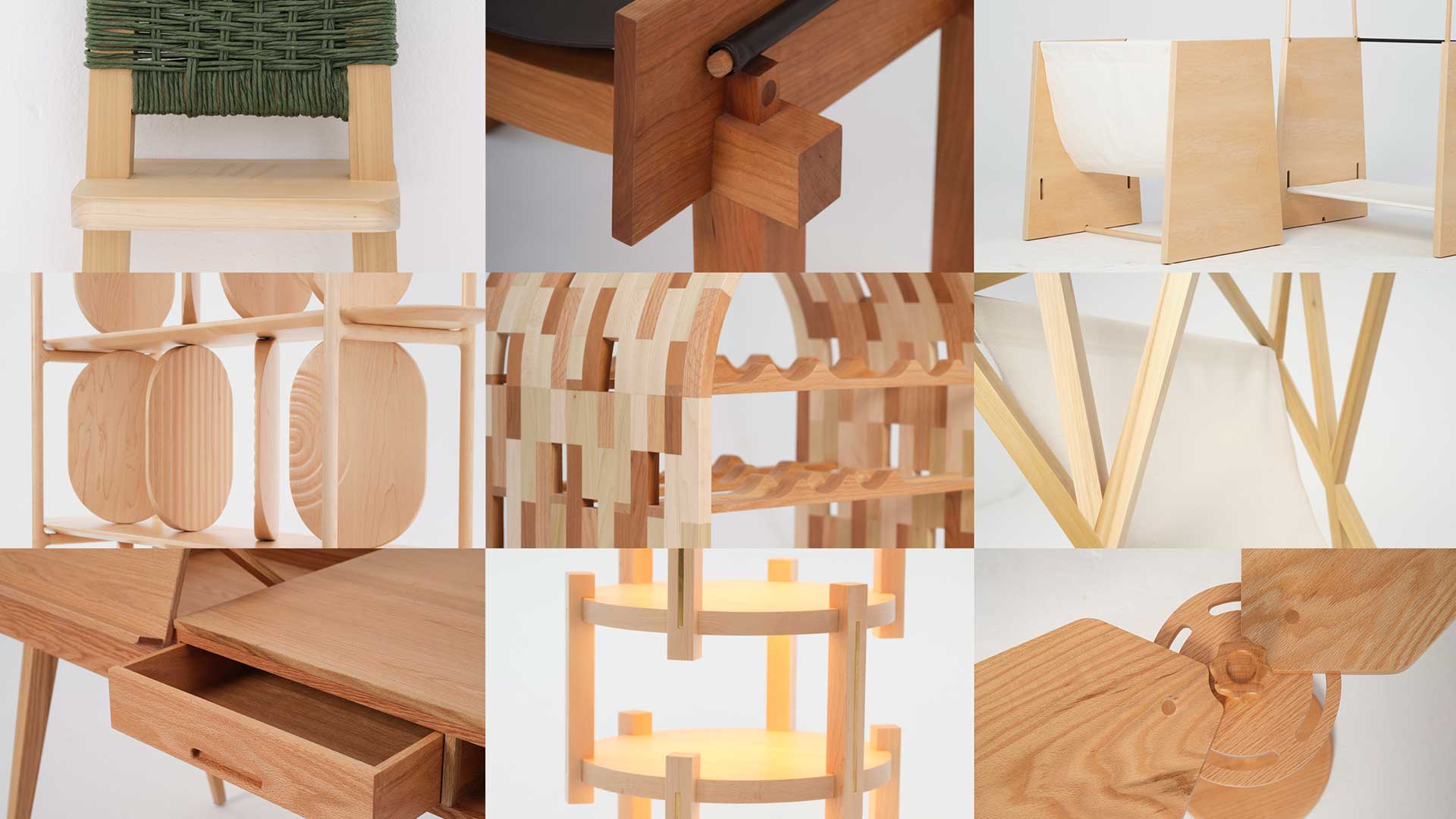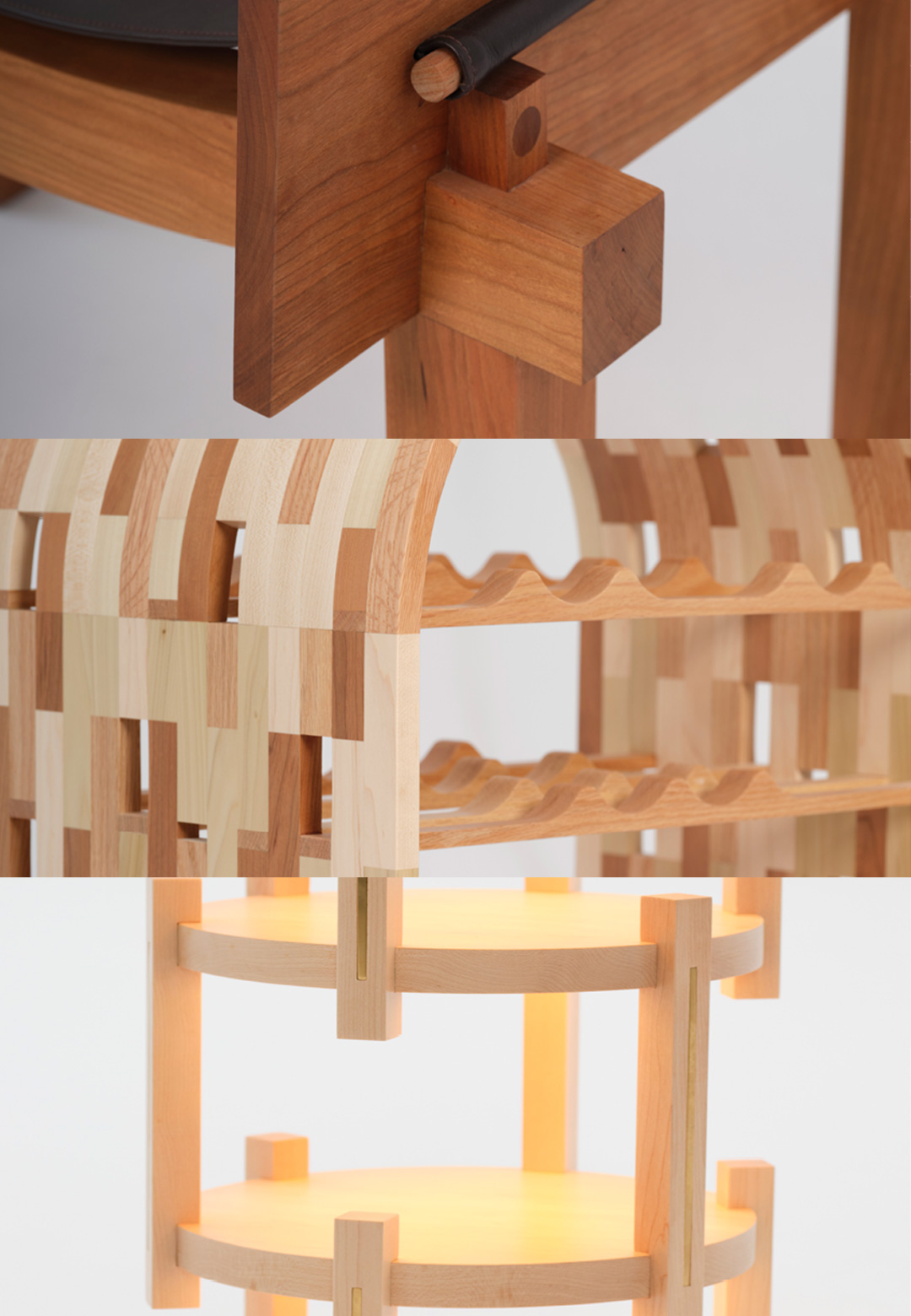As an uproarious pace conquers almost every facet of contemporary life, a few in the art and design industry are decelerating and swimming against the current. A hysterical consumerism is devouring the world, apparent in the upsurge in fast fashion brands, short-lived trends and profit that reckons a product’s replaceability. Within that context, ‘Slow design’ emerged as an offshoot of the global slow movement, aspired to catalyse individual, socio-cultural and environmental well-being. ‘Slowness’ here, however, does not refer to how long the design takes to come to life. Akin to its gastronomic predecessor ‘slow food,’ slow design is about taking time to do things well, with responsibility, and in a way that allows the creator and the user to derive pleasure from it. With this counter-response to our mindlessly fast-paced lives, is timelessness set for a resurgence?
Extending on these principles of slowness, the American Hardwood Export Council (AHEC) developed the SLOW project—addressing the growing debate on sustainability and a need to curtail the rampant throwaway culture. Bringing together works of 17 students, selected from nine Spanish design schools, AHEC presents SLOW Spain: Slow design for fast change. Spotlighting the talent and ideas of the emerging design generation, the design exhibition delves into the material possibilities of four sustainable but underused American hardwoods—red oak, maple, cherry and tulipwood. On display from February 7 to March 12, 2023, at the Fernán Gómez Centro Cultural de la Villa, the furniture design ensemble is a part of the official programming of the Madrid Design Festival 2023 in Spain. “SLOW is about education and opportunity. We have attempted to fill the gap in design education which often does not provide an in-depth experience for design students to learn about and work with hardwood materials,” says David Venables, AHEC’s European director.
The student projects mature and take shape under the mentorship of distinguished designers Inma Bermúdez and Moritz Krefter (Studio Inma Bermúdez), Álvaro Catalán de Ocón (ACdO) and Jorge Penadés (Oficina Penadés).
Daisy by Jonathan Paige
When conceptualising Daisy, designer Jonathan Paige had three requisites in mind: a piece of furniture that is aesthetically pleasing, multifunctional, and a calm space to allow creativity to ebb and flow. The delicate desk features two lids, each opening in a different direction. These lids, when open, transform the composition into two easels with storage space underneath, and a clandestinely positioned easel tray in the drawer handle. Dovetail joints weave the drawer sides together and the curved edges come to life through thin layers of veneer. Paige’s choice of American red oak gives the table design a colour which can vary from light reddish brown to a pale biscuit, and a vibrant grain texture.
Pami by Berta Albiac Adell, Queralt Font Sabadell and Albert Roca Nonell
What started as a desire for a sense of warmth and tranquillity, culminated in a versatile and essential design dubbed Pami. A strikingly beautiful object in itself, the piece shapeshifts as a table, storage and lighting design—its compact size and shape making it portable enough to be placed in different spaces of a home. Each level of the multi-tiered assemblage is affixed with a brass inset that is responsible for the warm LED lighting that engulfs Pami. The furniture designers resorted to American maple for its lighter, almost translucent tones, and its rigidity that enhances the stability of the finished creation.
Leve Mon Verre by Cèlia Anglés
Drawing inspiration from invaluable moments connecting with friends and family over a glass of wine, Cèlia Anglés crafts a sculptural object that graces those times as a centrepiece. Leve Mon Verre is a singular drinks cabinet that demands a second—perhaps closer—look, welcoming people to come together and share a drink. For her playful creation, Anglés employs American maple, red oak, cherry and tulipwood, weaving poetry from their contrasting tones and textures—a cabinet that is a conversation starter in its own right.
Scaffold by Arnau Anoro
Arnau Anoro’s approach contemplates on a new way of working, exploring how objects that surround us in our homes must serve a dual purpose: a space for focus as well as relaxation. Upon meticulous research, the adaptability and standardised form of construction scaffolding piqued his interest. The befittingly titled piece, Scaffold, is a shelving system that grows or shrinks with the abode, all the while creating new spaces for storage. American red oak equips the wooden furniture with strength and stiffness, a prerequisite for the system to be moved around safely.
Blas by Sheila Valle García
Following her observations of the Logroño food market—a space that once fostered a sense of community, but has lately become modernised and fast-paced—Sheila Valle García directed her efforts towards reintroducing older traditions for all generations of people who inhabit the market. The final design, Blas, is influenced by the classic Enea and Misericord chair designs, a category of church seating that also functions as a shelf to support a person during extended periods of prayer. For the main structure, Garcia harnesses American tulipwood—the contouring veins and tonal deviation—and Danish cord is woven to create a comfortable back support.
TÖEI by Alejandro Lorca, Elena Romero and Cristina Urbano
Rest and escapism are the protagonists in the cocoon-like chair design, TÖEI. Its structure comprises slats of timber that are dovetailed together at a 45 degree angle to give the chair strength and durability. American tulipwood, owing to its overall strength properties relative to its weight, lends itself well to the lightweight design of the chair. The tonal variation between the heartwood and sapwood only uplifts the character of the piece. The sustainable design has the lowest carbon footprint amongst all the projects. TÖEI is almost carbon neutral due to positive environmental features—including a relatively high proportion of American hardwood compared to non wood materials, high wood conversion efficiency, and use of the wood largely in its natural state.
Todo Toca by Eli Yang and Anna Perathoner
The product designers, with Todo Toca, wanted to actualise an object that captures the uniqueness of a home and goes beyond being a mere shelf—a place of reflection and remembrance. Each panel showcases different carved patterns, inviting users to touch and feel the varying textures on wood. Moreover, the panels spin, allowing for endless configurations that can change over time as the shelf accumulates keepsakes. American maple renders the shelf with bright tones and a characteristic toughness.
Bondu by Daniela González Martínez
Daniela González Martínez’s furniture design, Bondu, is an ode to the beauty of the timber in its natural materiality. Taking cues from Japanese craftsmanship which observes and takes advantage of the unpredictability and inconsistency of wood, she works with the Chidori joint—traditional Japanese joinery where wood planks conjoin into a cohesive assembly without the use of nails or glue. American cherry provides a refined finish to the furniture while adding a dash of warmth.
Habi by Natale Armendáriz, Jon Calleja, Nora Etxeberria and Ane Ozkoidi
Ever wondered what happens to a crib once it is outgrown? In many instances, it is either disposed of or left to gather dust. The designers of Habi reconsidered the possibilities of reuse and imagined other forms the crib could take, through their project. Made out of demountable parts and woven fabric, the piece can morph into a hanging rack and storage once the crib no longer serves a purpose. The strength and durability of American maple act as fundamentals to the deconstructable joints.
"The exhibition highlights the significance and the essence of ‘slow design’ and how it can translate into the creation of furniture. Each of the pieces have been handcrafted in the La Navarra carpentry in Madrid, from a selection of sustainable American hardwoods that are unfairly underused in Europe. What ensues is a potpourri of aesthetics and functionality in design, ranging from side tables to a bookcase-screen. The result is an eclectic mix of cleverly designed and beautifully made solutions that we hope will help launch these designers’ careers and show how these valuable hardwood materials can contribute to a more sustainable approach to product design,” shares Venables. SLOW Spain: Slow furniture for fast change is a glimpse into the Spanish designers’ interpretation of ‘slow design,’ an approach to design—or largely, life—that aims to bring about a positive change in contemporary culture and leave a legacy for future generations—a legacy of consciousness, care, and ‘slowness.’






 Sign in with email
Sign in with email










What do you think?